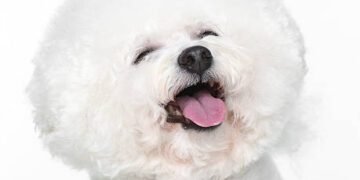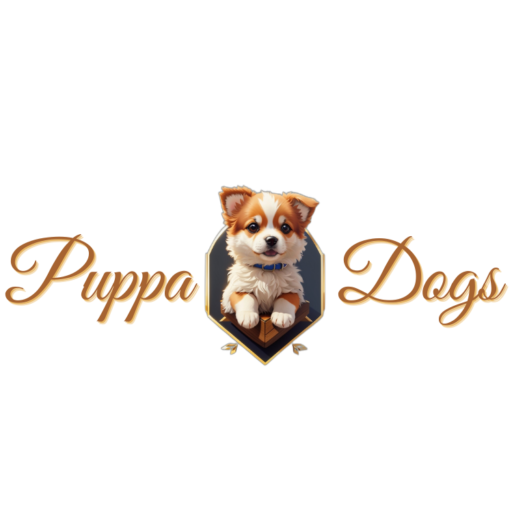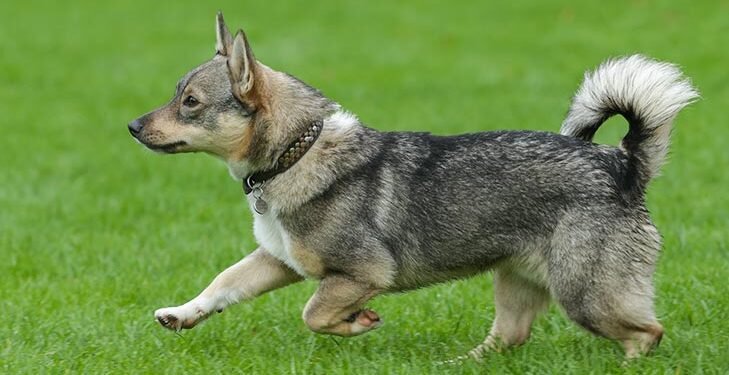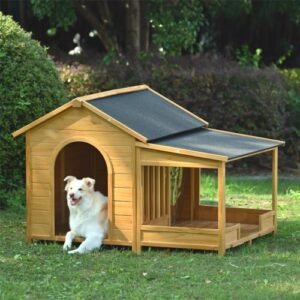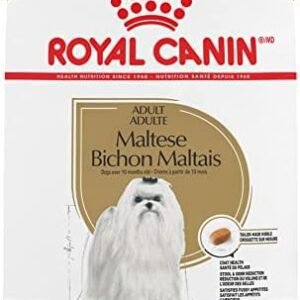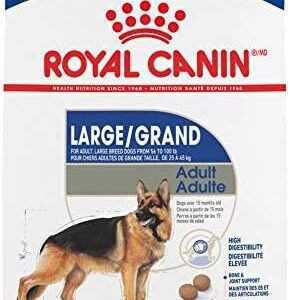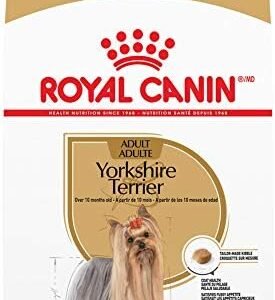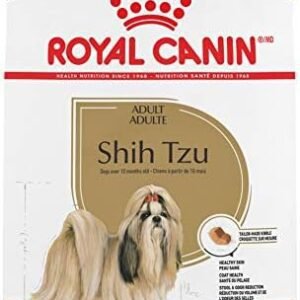Did you know the Swedish Vallhund, affectionately called the “Viking Dog,” dates back over a thousand years to the time of Norse explorers? This small but sturdy breed is a unique blend of charm, intelligence, and energy, making it a perfect companion for active families. Renowned for their fox-like appearance and wolf-like howl, Swedish Vallhunds are loyal, playful, and highly trainable, excelling in activities like agility and herding.
If you’re seeking a dog with ancient roots and a lively personality, the Swedish Vallhund might be your ideal match. Dive into the world of this fascinating breed to learn more about its history, care, and what makes it stand out in modern times.
Table of Contents
What Makes the Swedish Vallhund Breed Unique?
The Swedish Vallhund, often referred to as the “Viking Dog” due to its historical connection with the Vikings, is a small but sturdy breed known for its intelligence, loyalty, and herding skills. These dogs are agile and versatile, well-suited to both working and companionship roles. What makes them particularly unique is their wolf-like appearance, including prick ears and a robust, elongated body, despite being a purebred dog.
Selecting the Right Breed for Your Lifestyle
Choosing the right breed is a pivotal decision for anyone considering bringing a dog into their life. The characteristics of a breed play a fundamental role in influencing a dog’s behavior, needs, and compatibility with your lifestyle. Whether you’re an active individual, part of a family, or someone who prefers a quieter life, understanding what the Swedish Vallhund has to offer is essential.
Let’s take a closer look at the key characteristics of the Swedish Vallhund in the table below:
| Field | Information About Swedish Vallhund |
|---|---|
| Height | 11.5-13 inches (at the shoulder) |
| Weight | 20-35 pounds |
| Life Span | 12-15 years |
| Good with | Families, active individuals |
| Temperament | Intelligent, alert, and affectionate |
| Intelligence | Very high |
| Shedding Amount | Low to moderate |
| Grooming | Regular grooming required |
| Exercise Needs | Moderate to high |
| Energy Level | High |
| Barking Level | Moderate |
| Drool Amount | Minimal |
| Coat Length/Texture | Medium, harsh double coat with a soft undercoat |
| Colors | Sable, gray, red-yellow, or gray-brown |
| Patterns | Various markings, including masks and shaded areas |
Now that we’ve familiarized ourselves with the essential characteristics of the Swedish Vallhund, let’s delve deeper into what makes this breed truly unique and appealing.
Breed History and Origin
The Swedish Vallhund’s history is a fascinating journey that takes us back in time to the heart of Sweden, where these remarkable dogs played an integral role in the lives of the Scandinavian people. To truly understand the breed’s essence, we need to explore its roots, notable traits, and how its origin continues to shape its characteristics today.
Exploring Their Roots
- Viking Age Origins:
- The Swedish Vallhund’s history dates back to the Viking Age.
- Likely descended from spitz-type dogs brought to Sweden by Viking explorers.
- Historical Role:
- Name “Vallhund” means “herding dog” in Swedish.
- Primarily used for herding cattle, guarding them from predators, and aiding Swedish farmers.
- Physical Characteristics:
- Small size but with wolf-like features, including upright ears, a wedge-shaped head, and a bushy tail.
- Ancient lineage reflected in their wild-like appearance.
- Versatility:
- Known for agility and courage in herding tasks.
- Played a secondary role as pest controllers, keeping barns and homes free of rats and vermin.
- Historical Significance:
- Integral to the livelihoods of Norsemen and Swedish farmers.
- A symbol of the Viking spirit with a balance of practicality and loyalty.
Notable Traits
What sets the Swedish Vallhund apart in history are the unique traits that have made them such prized companions and workers. Among these remarkable traits are their intelligence, energy, and loyalty. These qualities were essential for the tasks they performed during the Viking Age. Their intelligence made them highly trainable and adaptable, while their energy levels allowed them to work tirelessly in the challenging Scandinavian climate.
Another distinctive feature of the Swedish Vallhund is their “sable” coat color. Sable refers to a coat pattern where the hairs are banded with different colors, resulting in a beautiful and unique appearance. This sable coat is particularly striking in Vallhunds and contributes to their unmistakable visual appeal.
Relevance of Origin
The origin of the Swedish Vallhund continues to influence its characteristics in modern times. While they may not be herding cattle as their Viking ancestors did, the breed’s love for work and their herding instincts are still very much a part of their nature. Owners of Swedish Vallhunds often find them excelling in various dog sports and activities, as their intelligence and agility shine through.
Their wolf-like appearance, a testament to their historical lineage, is also a part of their charm. It gives them a unique and intriguing visual appeal, making them stand out in the canine world.
Understanding the Swedish Vallhund Breed’s Traits
To truly appreciate the Swedish Vallhund, one must delve into the heart of what makes this breed unique. Their physical characteristics, temperament, and environmental needs all play a role in understanding their suitability as companions and family pets.
Physical Characteristics
Temperament Overview
The Swedish Vallhund’s temperament is a testament to their history as working dogs. Their intelligence, alertness, and affectionate nature make them wonderful companions, but their herding background also influences their behavior.
Family Compatibility: Swedish Vallhunds are generally well-suited for families. Their loyalty and affection make them great companions for both adults and children. However, their herding instincts can sometimes lead them to try to “herd” children, so supervision may be necessary when very young children are involved.
Compatibility with Other Pets: When properly socialized, Swedish Vallhunds tend to get along with other pets. Their friendly and adaptable nature allows them to coexist with other dogs, cats, and even smaller animals. Early socialization is key to ensuring that they are comfortable around other pets.
Environment Needs
Swedish Vallhunds can adapt well to various living environments, but there are certain needs to keep in mind:
Space: While they are not particularly large, Swedish Vallhunds appreciate space to move around and explore. A home with a yard where they can burn off their energy is ideal. They are known for their agility and can excel in dog sports that require space and movement.
Temperature: The breed’s thick double coat provides protection in cold weather. They can tolerate cooler temperatures, but like all dogs, they should be protected from extreme cold. In hot weather, their dense coat can make them prone to overheating, so it’s essential to keep them cool and provide shade and fresh water during warm months.
Common Behavioral Traits
Understanding the behavioral traits of the Swedish Vallhund is crucial for responsible ownership:
- Positive Traits: Swedish Vallhunds are known for their intelligence, making them highly trainable. They enjoy learning new commands and engaging in activities that challenge their minds. Their loyalty to their owners is unwavering, making them excellent companions. They are also alert and make good watchdogs, quick to signal any changes in their environment.
- Challenging Traits: Due to their herding instincts, Swedish Vallhunds may exhibit behaviors like nipping at heels, a trait inherited from their history of herding cattle. This behavior can be managed through training and redirection. Their high energy levels require regular exercise, and without it, they may become bored and engage in undesirable behaviors. Grooming, too, is a necessary commitment due to their double coat, requiring brushing to prevent matting.
Popularity and Recognition
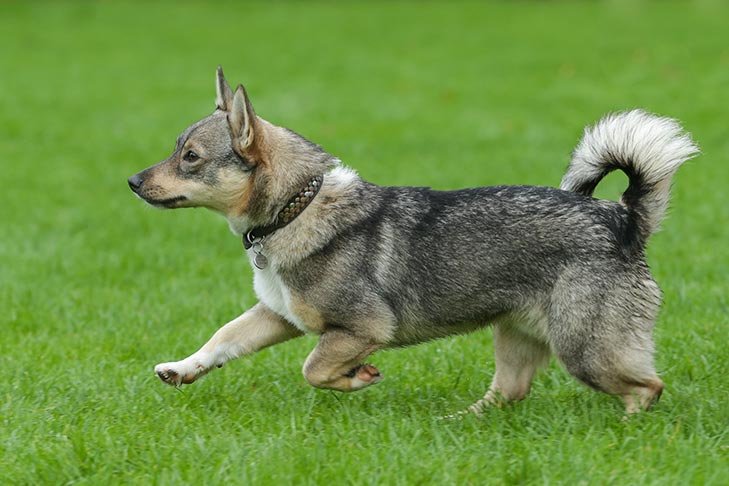
The Swedish Vallhund, also known as the “Viking Dog,” is a breed that has been capturing the hearts of dog enthusiasts around the world. In this section, we will explore the breed’s current popularity, its recognition by kennel clubs and breed organizations, and any notable breed varieties.
Current Popularity
- Growing Popularity:
- Increasingly sought after due to its unique appearance, intelligence, and versatility.
- Recognized for its distinctive qualities, even though it’s not a common breed.
- Adaptability:
- Thrives in active households and adapts to various lifestyles.
- Compatible with children and other pets, making them ideal for families.
- Playful and Affectionate:
- Endearing, loyal, and loving nature attracts dog lovers.
- A perfect companion for those seeking an interactive and devoted pet.
- Distinctive Appearance:
- Wolf-like features turn heads and spark curiosity.
- Their unique look contributes significantly to their appeal.
- Size and Living Arrangements:
- Small to medium size makes them suitable for apartments and suburban homes.
- Requires regular exercise, making them a good fit for active or semi-active owners.
- Versatility:
- Adaptable to urban and suburban environments with proper care and attention.
Breed Recognition
The Swedish Vallhund has received recognition from various kennel clubs and breed organizations, contributing to its status as a well-respected breed within the dog community.
American Kennel Club (AKC): The Swedish Vallhund was officially recognized by the American Kennel Club (AKC) in 2007, gaining entrance into the Herding Group. This recognition marked a significant milestone for the breed in the United States and increased its visibility.
The Kennel Club (UK): In the United Kingdom, the Swedish Vallhund is recognized by The Kennel Club. As a recognized breed, Swedish Vallhunds can participate in various dog shows and competitions, further showcasing their qualities to a broader audience.
Fédération Cynologique Internationale (FCI): The FCI, which is the international canine organization that governs purebred dog breeds, also recognizes the Swedish Vallhund. This recognition enables Swedish Vallhund enthusiasts worldwide to participate in FCI-sanctioned events and activities.
Notable Breed Varieties
The Swedish Vallhund is a breed that exhibits a consistent set of characteristics, but variations within the breed may exist. These variations can be attributed to factors like geographical origin and breeding practices. While there are no distinct “varieties” of Swedish Vallhunds like some other breeds, there may be some regional differences in appearance and temperament.
For example, Swedish Vallhunds from different parts of the world may display subtle differences in coat color or markings. These differences do not affect the breed’s standard or recognized traits but may be of interest to enthusiasts who appreciate thenuances within the breed
Health Considerations and Care
Caring for your Swedish Vallhund’s health is a fundamental aspect of responsible dog ownership. In this section, we will explore the common health issues that the breed may be prone to and provide tips for promoting a longer and healthier life for your beloved Viking Dog.
Common Health Issues
While Swedish Vallhunds are generally a healthy breed, like all dogs, they can be prone to certain health issues. Being aware of these potential concerns and taking proactive steps is essential to ensure your dog’s well-being. Common health issues that can affect Swedish Vallhunds include:
| Condition | Description | Prevention/Management |
|---|---|---|
| Hip Dysplasia | Genetic condition where the hip joint doesn’t develop properly, causing arthritis and mobility issues. | Regular veterinary check-ups, maintaining a healthy weight, and joint supplements. |
| Progressive Retinal Atrophy (PRA) | Inherited eye condition leading to vision loss and eventual blindness. | Regular eye exams and genetic screening. |
| Luxating Patella | Dislocation of the kneecap causing lameness and pain. | Severe cases may require surgical intervention. |
| Cataracts | Clouding of the eye’s lens, impairing vision. | Regular eye exams; surgery may restore vision if needed. |
| Elbow Dysplasia | Developmental issue in the elbow joint, causing lameness and pain. | Weight management, joint supplements, and possible surgery in severe cases. |
| Hypothyroidism | Insufficient thyroid hormone production leading to weight gain, skin problems, and lethargy. | Regular thyroid function tests; managed with medication. |
| Degenerative Myelopathy | Progressive spinal cord disease causing hind limb weakness and paralysis. | No cure; physical therapy and supportive care can help manage symptoms. |
| Obesity | Weight gain due to insufficient exercise or improper diet, leading to other health problems. | Balanced diet, portion control, and regular physical activity. |
Lifespan and Longevity
Swedish Vallhunds have an average lifespan of 12 to 15 years. To ensure that your Vallhund enjoys a long and healthy life, consider the following tips:
- Regular Veterinary Check-ups: Schedule regular visits to the vet to monitor your dog’s overall health. Early detection of any health issues is essential for effective treatment.
- Healthy Diet: Provide a balanced and age-appropriate diet to maintain your dog’s ideal weight. Avoid overfeeding, and consult your vet for dietary recommendations.
- Exercise: Swedish Vallhunds are active dogs that require regular exercise. Engaging in activities like brisk walks, running, and dog sports can help keep them in good shape and prevent obesity.
- Dental Care: Dental health is crucial. Brush your Vallhund’s teeth regularly and provide dental chews or toys to promote oral hygiene.
- Grooming: Regular grooming is essential for Swedish Vallhunds due to their double coat. Brushing their coat helps prevent matting and skin issues.
- Mental Stimulation: Keep their minds active with puzzle toys, training sessions, and interactive games. Mental stimulation is as crucial as physical exercise for this intelligent breed.
- Socialization: Early socialization is vital to ensure your Swedish Vallhund is comfortable around other dogs and people. It helps prevent behavioral problems.
- Quality Sleep: Ensure your dog gets enough quality sleep to promote overall well-being and mental health.
- Stress Management: Swedish Vallhunds are sensitive dogs. Minimize stressors in their environment and provide a safe and nurturing home.
- Heartworm and Parasite Prevention: Use preventive measures against heartworm and common parasites. Your vet can recommend appropriate treatments.
- Monitoring for Hereditary Conditions: Be aware of the hereditary conditions that Swedish Vallhunds may be prone to, and discuss these with your vet during check-ups.
- Spaying/Neutering: Consult your vet regarding the appropriate age for spaying or neutering your Vallhund. This can have health benefits and prevent unwanted litters
By following these tips and providing proper care, you can help ensure that your Swedish Vallhund enjoys a long and fulfilling life.
Exercise and Activity Recommendations for Swedish Vallhunds
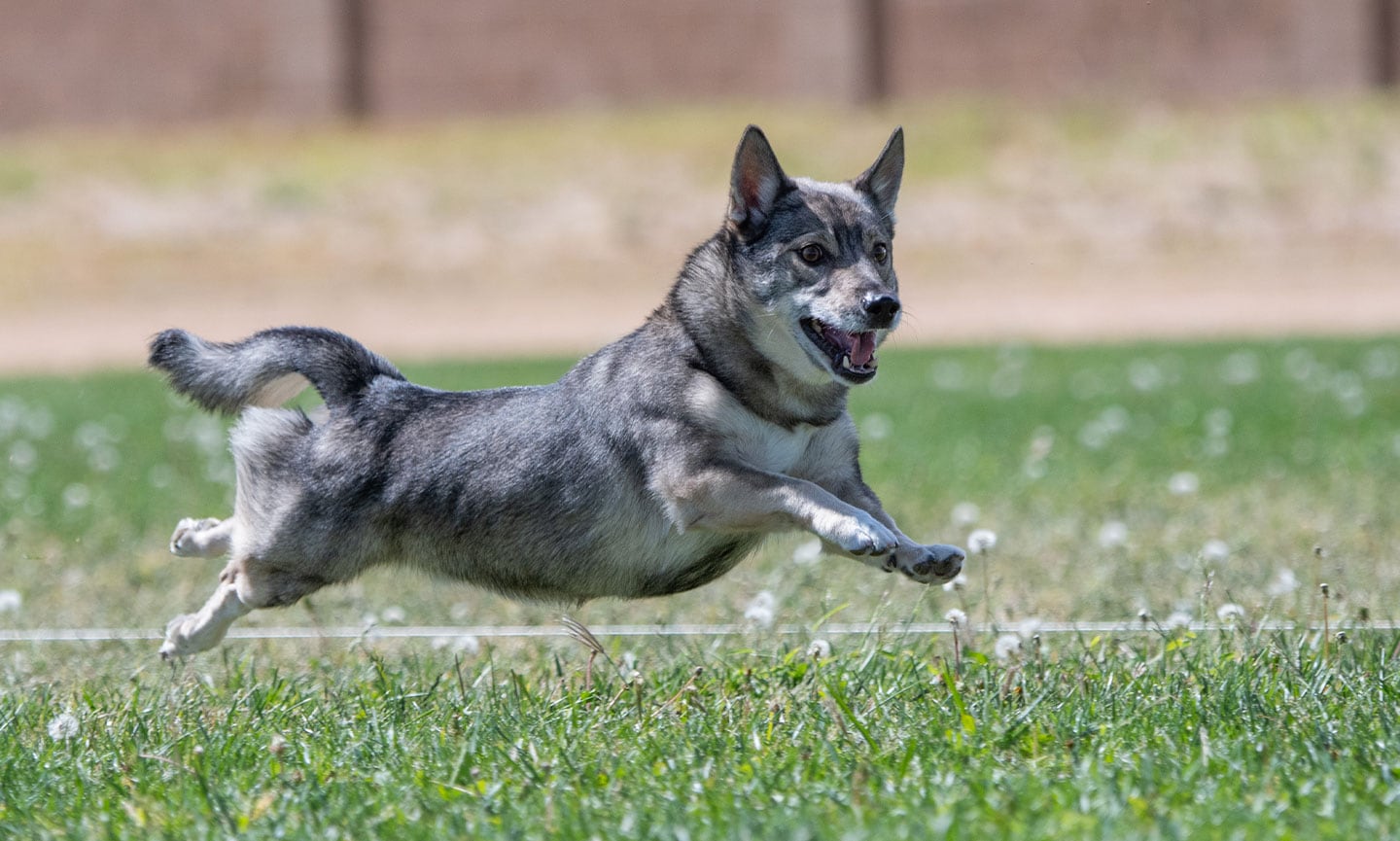
Swedish Vallhunds are a highly active and intelligent breed with a history of herding and working in challenging environments. To ensure their physical and mental well-being, it’s essential to provide them with regular exercise and engage them in stimulating activities. In this section, we’ll outline a comprehensive exercise plan tailored to the specific needs of Swedish Vallhunds.
Understanding the Exercise Needs
Swedish Vallhunds are known for their high energy levels and agility. They are a breed that thrives on physical activity and mental stimulation. Failing to meet their exercise requirements can lead to boredom, weight gain, and behavioral issues. Here’s a breakdown of their exercise needs:
- Duration: Swedish Vallhunds require at least 60 to 90 minutes of exercise every day. This includes both physical and mental activities.
- Intensity: Their workouts should be of moderate to high intensity to keep them engaged and fulfill their energy needs.
- Frequency: It’s best to engage them in exercise on a daily basis to maintain their health and happiness.
Types of Exercise
Swedish Vallhunds benefit from a variety of exercises to keep them physically fit and mentally sharp. Here are some exercise options for your Viking Dog:
- Brisk Walks: Daily walks are essential for Swedish Vallhunds. These walks provide an opportunity for them to explore their environment, expend energy, and satisfy their herding instincts.
- Playtime: Engage in interactive play sessions with toys like balls and frisbees. These can help your Vallhund burn off energy and stimulate their minds.
- Agility Training: Swedish Vallhunds excel in agility activities. Setting up an agility course in your backyard or attending agility classes can provide both exercise and mental stimulation.
- Running: If you’re a runner, consider taking your Vallhund along for your daily jog. They are excellent running partners and can keep up with your pace.
- Swimming: Some Swedish Vallhunds enjoy swimming. If you have access to a safe water source, let them take a dip, which is an excellent full-body workout.
- Hiking: Take your Vallhund on hikes or nature walks. The change of scenery and the opportunity to explore new terrain can be highly stimulating for them.
- Fetch: A game of fetch is a great way to keep them active and entertained. They enjoy the chase and retrieval, which is both a physical and mental exercise.
- Obedience and Training: Swedish Vallhunds are intelligent dogs that thrive on learning. Incorporate obedience training into their daily routine. This not only provides mental stimulation but also reinforces good behavior.
- Puzzle Toys: Use puzzle toys and treat-dispensing toys to challenge their problem-solving skills and keep them engaged.
- Hide and Seek: Play a game of hide and seek in your home or yard. Hide treats or toys for them to find, which taps into their natural instincts.
- Dog Sports: Consider enrolling your Vallhund in dog sports like agility, obedience trials, or herding competitions. These activities can be highly rewarding for both you and your dog.
Exercise Safety
While providing exercise is essential for Swedish Vallhunds, it’s equally important to ensure their safety. Here are some safety tips to keep in mind:
- Always leash your dog during walks and outdoor activities, as Swedish Vallhunds have strong herding instincts and may chase after small animals.
- Ensure your yard is secure with proper fencing to prevent your Vallhund from wandering off.
- Be cautious in extreme weather conditions. In hot weather, provide shade and keep your Vallhund hydrated. In cold weather, protect them from extreme cold to prevent frostbite.
- Check your Vallhund’s paws for injuries or irritations, especially after outdoor activities. Their paws are their primary mode of transportation, so keeping them healthy is vital.
Nutrition and Feeding Guidelines for Swedish Vallhunds
Proper nutrition is essential for the health and well-being of your Swedish Vallhund. This intelligent and active breed requires a well-balanced diet that caters to their size, age, and activity level. In this section, we will offer specific dietary recommendations, address potential dietary restrictions or allergies, and provide guidance on feeding schedules and portion control.
Dietary Recommendations
Swedish Vallhunds are an energetic breed with unique dietary requirements. Here are some key dietary recommendations for your Viking Dog:
- High-Quality Dog Food: Opt for high-quality commercial dog food that is specifically formulated for active breeds. Look for options that list a high-quality source of animal protein as the first ingredient.
- Protein: Swedish Vallhunds benefit from a diet with a moderate to high protein content. Protein supports their active lifestyle and muscle maintenance. Sources of protein can include chicken, beef, fish, and lamb.
- Healthy Fats: Ensure that the dog food you choose contains healthy fats. Omega-3 and Omega-6 fatty acids are essential for maintaining a healthy skin and coat. Look for fats from sources like fish oil or flaxseed.
- Carbohydrates: Carbohydrates provide energy for your Vallhund’s active lifestyle. Quality dog food should include wholesome grains or vegetables, such as rice, sweet potatoes, or peas.
- Vitamins and Minerals: Check for a well-rounded vitamin and mineral profile in your dog’s food. These nutrients are vital for overall health and well-being.
- Avoid Fillers: Steer clear of dog foods with excessive fillers, artificial additives, or preservatives. Your dog’s food should provide balanced nutrition without unnecessary additives.
- Consult Your Veterinarian: It’s essential to consult your veterinarian to determine the specific dietary needs of your Swedish Vallhund. They can provide guidance on portion sizes and dietary adjustments based on your dog’s age, weight, and activity level.
Dietary Restrictions and Allergies
Swedish Vallhunds, like all dogs, may have dietary restrictions or allergies that need to be addressed. Common food allergies in dogs can include:
- Grains: Some dogs may be sensitive to grains like wheat, corn, or soy. If your Vallhund shows signs of food allergies, consider grain-free options.
- Chicken: Chicken is a common allergen for dogs. If you notice signs of allergies, such as itching, digestive issues, or ear infections, consider switching to a different protein source.
- Artificial Additives: Artificial colors, flavors, and preservatives can cause allergic reactions in some dogs. Opt for foods with minimal artificial additives.
To identify potential allergies or sensitivities, observe your Vallhund’s reactions to specific ingredients and consult your veterinarian for allergy testing if necessary. They can recommend suitable hypoallergenic or limited-ingredient diets.
Feeding Schedule and Portion Control
Establishing a consistent feeding schedule and practicing portion control is essential for maintaining your Swedish Vallhund’s ideal weight and overall health. Here are some guidelines:
- Feeding Schedule: Create a regular feeding schedule with set mealtimes, typically twice a day. This routine helps regulate your dog’s digestion and minimizes the risk of overeating.
- Portion Sizes: The recommended portion size can vary depending on your dog’s age, activity level, and size. It’s crucial to follow the guidelines provided on the dog food packaging or consult your veterinarian for personalized recommendations.
- Avoid Overfeeding: Swedish Vallhunds are prone to gaining weight if overfed. Be mindful of portion sizes and avoid giving in to begging behaviors.
- Fresh Water: Ensure your Vallhund has access to fresh, clean water at all times. Proper hydration is essential for their health.
- Treats and Snacks: While treats and snacks can be a part of your Vallhund’s diet, use them sparingly. Opt for healthy treats that align with their dietary needs.
- Weight Management: Regularly monitor your Vallhund’s weight. If you notice weight gain or loss, adjust their portion sizes accordingly. Consult your veterinarian for guidance on maintaining a healthy weight.
- Transitioning Foods: When switching to a new dog food or adjusting their diet, do so gradually over several days to prevent digestive upset.
Personal Stories and Testimonials
One of the best ways to understand the joys and challenges of owning a Swedish Vallhund is by hearing from real-life owners who have welcomed these Viking Dogs into their lives. Let’s delve into some personal stories and testimonials that shed light on the experiences of Swedish Vallhund enthusiasts:
Testimonial 1: A Loyal Companion
Owner: Sarah W.
“I’ve had the pleasure of sharing my life with a Swedish Vallhund named Loki for the past five years, and it’s been an incredible journey. Loki is not just a pet; he’s a loyal companion who is always by my side. His intelligence and herding instincts are truly remarkable. While his attempts to ‘herd’ our children can be amusing, it’s his affection and unwavering loyalty that have made him an integral part of our family. Whether we’re hiking through the woods or just relaxing at home, Loki’s presence brightens our days. He’s a unique breed with a heart of gold, and I couldn’t imagine life without him.
Testimonial 2: The Perfect Adventure Partner
Owner: David S.
“As an avid hiker and outdoor enthusiast, I wanted a dog that could keep up with my active lifestyle. That’s when I discovered the Swedish Vallhund, and I couldn’t be happier. My Vallhund, Freya, is not only my adventure partner but also a cherished friend. We’ve hiked through rugged terrain, explored beautiful trails, and even dabbled in agility competitions together. Her energy and agility are truly impressive, and I’ve come to appreciate her intelligence and eagerness to learn. Freya’s zest for life and boundless enthusiasm keep me motivated to explore the great outdoors, and I’m grateful to have her as my faithful sidekick.”
Testimonial 3: A Family Favorite
Owner: The Anderson Family
When we were looking for a family dog, we wanted one that was not only great with kids but also brought something special to our household. That’s when we stumbled upon the Swedish Vallhund. Our Vallhund, Odin, is not just a pet; he’s a family favorite. His gentle nature and protective instincts make him an excellent companion for our children. We’ve watched our kids grow up with Odin by their side, and the bond they share is heartwarming. His playful antics and intelligence keep the entire family entertained. We can’t imagine our home without our Viking Dog, and he’s truly become a cherished member of our family.”
Testimonial 4: An Intellectual Challenge
Owner: Emma R.
I’ve always been drawn to intelligent dog breeds, and the Swedish Vallhund has certainly lived up to my expectations. My Vallhund, Mjölnir, is a true intellectual challenge. We engage in daily training sessions, agility trials, and even some advanced obedience competitions. His ability to learn new tricks and commands never ceases to amaze me. But beyond his intelligence, it’s his affection and loyalty that make Mjölnir an exceptional companion. We’ve formed a strong bond through our shared experiences, and I look forward to many more adventures and learning opportunities with my Viking Dog.”
These personal stories and testimonials highlight the diverse experiences and deep connections that people form with their Swedish Vallhunds. Whether it’s their unwavering loyalty, herding instincts, intelligence, or boundless energy, these Viking Dogs have left an indelible mark on the lives of their owners. Each story is a testament to the unique qualities of the breed and the joy it brings to those who welcome them into their homes.
Cost of Owning a Swedish Vallhund
Bringing a Swedish Vallhund into your life is a rewarding experience, but it’s essential to understand the costs associated with dog ownership. Owning a dog involves various expenses, both upfront and ongoing. Let’s break down the costs to help you budget for your Viking Dog:
Upfront Costs:
- Purchase Price: The initial cost of acquiring a Swedish Vallhund can vary depending on factors like the breeder’s reputation and location. Expect to pay anywhere from $1,500 to $3,000 for a well-bred Vallhund puppy.
- Vaccinations and Microchipping: Puppies require vaccinations to protect against common diseases. Microchipping for identification is also important. These initial vet visits can cost around $100-$300.
- Spaying/Neutering: If your Vallhund is not spayed/neutered when you acquire them, you may need to budget for this procedure. The cost typically ranges from $200 to $500.
- Supplies: You’ll need to purchase essential supplies like food and water bowls, a collar, leash, toys, a crate, and bedding. These items can add up to $100-$200.
- Training Classes: While not mandatory, many Vallhund owners choose to enroll in puppy training classes. These can cost $100-$300 for a basic course.
Ongoing Expenses:
- Food: High-quality dog food is crucial for your Vallhund’s health. Expect to spend around $40-$60 per month on food. This cost may vary based on the brand and dietary requirements.
- Veterinary Care: Regular check-ups and preventive care are essential. Budget for annual vet visits, vaccinations, and potential emergencies. This can amount to $200-$600 annually.
- Grooming: Swedish Vallhunds have a double coat that requires regular brushing. Grooming tools and occasional professional grooming may cost around $50-$200 annually.
- Training and Socialization: Training is an ongoing process, and it’s important to provide mental stimulation. Consider budgeting $100-$300 for training classes and toys.
- Medications and Preventatives: This includes heartworm prevention, flea and tick control, and any prescribed medications. Budget around $100-$200 annually.
- Pet Insurance: While optional, pet insurance can provide peace of mind in case of unexpected medical expenses. Costs vary depending on coverage but typically range from $300 to $700 annually.
- Licensing and Registration: You may need to pay for a dog license, which can cost $10 to $20 annually.
- Boarding and Pet Sitting: If you travel without your Vallhund, boarding or pet sitting services may be necessary. These costs can vary widely based on location and duration.
- Toys and Accessories: Budget for occasional purchases of new toys, accessories, and replacements for worn-out items. This can amount to $50-$100 annually.
- Emergency Fund: It’s wise to have an emergency fund for unexpected expenses, such as accidents or illnesses. Plan for an annual contribution to this fund.
- Routine Expenses: Include miscellaneous expenses like waste bags, cleaning supplies, and minor repairs or replacements around your home.
These cost estimates are approximate and can vary depending on your location and the specific needs of your Swedish Vallhund. It’s important to budget for these expenses to ensure that you can provide the best care for your Viking Dog throughout their life. Responsible ownership includes not only love and attention but also financial preparedness to meet your dog’s needs
Grooming and Care

Grooming and care are vital aspects of keeping your Swedish Vallhund happy, healthy, and looking their best. This section provides an overview of grooming tips, accessories, and care products tailored to the specific needs of the Swedish Vallhund breed.
Grooming Tips for Swedish Vallhunds
Swedish Vallhunds have a distinctive double coat that consists of a medium-length, harsh outer coat and a soft undercoat. Proper grooming is essential to keep their coat in excellent condition and prevent issues like matting. Here are some grooming tips for Swedish Vallhunds:
- Brushing: Regular brushing is crucial to remove loose hair, dirt, and distribute natural oils. Aim to brush your Vallhund at least 2-3 times a week. During shedding seasons, you may need to increase the frequency to daily brushing to manage shedding.
- Bathing: Swedish Vallhunds are generally low-maintenance in terms of bathing. Bathe your dog as needed, typically every 2-3 months or when they get dirty. Use a dog-specific shampoo to maintain the coat’s health and shine.
- Coat Maintenance: Check your Vallhund’s coat for tangles or mats, especially behind the ears and in the armpits. Gently detangle any knots with a slicker brush or a mat splitter.
- Nail Trimming: Regular nail maintenance is essential. Trim your Vallhund’s nails every 2-4 weeks to prevent overgrowth, which can cause discomfort or affect their gait.
- Ear Cleaning: Clean your Vallhund’s ears regularly to prevent wax buildup and ear infections. Use a dog-specific ear cleaner and cotton balls to gently clean the ears.
- Teeth Care: Dental hygiene is crucial. Brush your Vallhund’s teeth several times a week to prevent dental issues. Dental chews and toys can also help maintain oral health.
- Eye Care: Check your dog’s eyes for signs of irritation or discharge. If you notice any issues, consult your vet for guidance. Regular eye cleaning may be necessary.
- Paw Maintenance: Regularly check your Vallhund’s paws for injuries, irritations, or foreign objects like thorns. Keep the paw pads clean and moisturized.
Recommended Accessories and Care Products
To make grooming and care for your Swedish Vallhund more effective and convenient, consider the following accessories and care products:
Care and Maintenance Routine
Establishing a routine for grooming and care is essential to ensure your Swedish Vallhund’s health and well-being. Here’s a suggested care and maintenance routine:
- Daily:
- Check your dog’s ears, eyes, and paws for any signs of irritation or injury.
- Provide exercise and mental stimulation to keep your Vallhund happy and healthy.
- Weekly:
- Brush your dog’s coat to remove loose hair and prevent matting.
- Check and clean your dog’s teeth several times a week.
- Play and engage in training sessions to maintain mental agility.
- Monthly:
- Trim your Vallhund’s nails as needed.
- Inspect your dog’s coat for mats and tangles, addressing them promptly.
- Check for any changes in your dog’s skin or coat condition.
- Every 2-3 Months:
- Give your Vallhund a bath with dog-specific shampoo and conditioner.
- Conduct a thorough check of your dog’s ears and clean them as needed.
- As Needed:
- Groom your dog’s coat more frequently during shedding seasons.
By following a regular care and maintenance routine, you’ll keep your Swedish Vallhund looking and feeling their best while ensuring their overall well-being
Choosing and Adopting a Swedish Vallhund
Adopting a dog is a significant decision that can bring immense joy and companionship to your life. When it comes to selecting a breed, the Swedish Vallhund offers a unique and rewarding experience. In this section, we will explore the reasons for adopting a Swedish Vallhund, the research and preparation needed, the adoption process, and important ethical considerations.
Reasons for Adoption
Adopting a Swedish Vallhund can be a deeply fulfilling choice for several reasons:
- Rescue and Second Chances: By adopting a Vallhund from a rescue or shelter, you are giving a dog a second chance at a loving and caring home. Many rescue dogs have faced hardships in their past, and your adoption provides them with a brighter future.
- Unique Breed Characteristics: Swedish Vallhunds are known for their intelligence, loyalty, and agility. Their wolf-like appearance and herding instincts make them a distinct and fascinating breed to welcome into your home.
- Family Companionship: Vallhunds are generally good with families. Their affectionate nature makes them excellent companions for adults and children alike. They can become an integral part of your family, offering love and loyalty
- Compatibility with Other Pets: With proper socialization, Swedish Vallhunds can get along well with other dogs, cats, and smaller animals. If you have other pets, adopting a Vallhund can be a harmonious choice.
- Versatility: Swedish Vallhunds excel in various activities, from agility and obedience trials to herding competitions. If you’re looking for a versatile and active canine companion, this breed may be a perfect fit.
Research and Preparation
Before you embark on the journey of adopting a Swedish Vallhund, it’s essential to engage in thorough research and preparation:
- Learn About the Breed: Gain a deep understanding of the Swedish Vallhund breed. Research their characteristics, needs, and potential challenges. Consider reading breed-specific books, consulting breed clubs, and talking to Vallhund owners.
- Assess Your Lifestyle: Evaluate your daily routine, living situation, and activity level. Ensure that the Vallhund’s exercise and mental stimulation needs align with your lifestyle.
- Financial Considerations: Owning a dog involves financial responsibilities. Be prepared for expenses such as food, grooming, veterinary care, training, and supplies.
- Training and Socialization: Understand the importance of training and socialization for a Vallhund. Be ready to commit time and effort to proper training and early socialization to ensure a well-adjusted dog.
- Safety Measures: Puppy-proof your home and yard, making it safe for your new Vallhund. Remove potential hazards and secure any dangerous areas.
- Locate Reputable Rescues: Research and identify reputable rescue organizations or breed-specific rescues that specialize in Swedish Vallhunds. Look for organizations that prioritize the well-being of the dogs and adhere to ethical standards.
Adoption Process
The adoption process for a Swedish Vallhund typically involves several steps:
- Application: Start by completing an adoption application provided by the rescue or organization. This application typically gathers information about your living situation, experience with dogs, and the type of home you can provide.
- Interview and Home Visit: Some rescues conduct interviews and home visits to assess your suitability as a Vallhund owner. This process ensures that the dog is placed in a safe and loving environment.
- Adoption Fee: Be prepared for an adoption fee, which helps cover the costs of the dog’s care, including vaccinations, spaying/neutering, and other medical expenses. The fee varies from one rescue to another.
- Adoption Agreement: Once approved, you will typically need to sign an adoption agreement. This agreement outlines your responsibilities as an owner and may include clauses related to returning the dog if necessary.
- Bringing Your Dog Home: Prepare your home for the arrival of your new Vallhund. Ensure you have the necessary supplies, such as food, bowls, a leash, collar, and a comfortable place for your dog to sleep.
- Transition Period: Understand that there may be an adjustment period as your Vallhund settles into their new home. Be patient and provide plenty of love and care during this transition.
Breeding and Ethical Considerations
If you’re considering adopting a Swedish Vallhund, it’s essential to be aware of breeding and ethical considerations:
- Rescue Over Purchase: Opting to adopt from a rescue or shelter is a compassionate choice. It supports the well-being of dogs in need and reduces the demand for puppy mills and irresponsible breeding.
- Responsible Breeding: If you ever decide to pursue a Vallhund from a breeder, ensure they adhere to ethical breeding practices. Responsible breeders prioritize the health and genetic diversity of the breed.
- Health Screening: Ethical breeders conduct health screenings for common breed-specific issues to ensure the health of their dogs and puppies.
- Avoid Puppy Mills: Refrain from purchasing dogs from puppy mills or pet stores. These sources often prioritize profit over the well-being of the dogs.
- Adoption First: Always explore adoption as your first choice. Rescue organizations and shelters offer wonderful dogs in need of homes. By adopting, you become a part of the solution to the issue of homeless dogs.
In conclusion, adopting a Swedish Vallhund can be a fulfilling and rewarding experience. By conducting thorough research, preparing for the adoption process, and considering ethical aspects, you can provide a loving home to a Vallhund in need, offering them a second chance at a happy life. Whether you choose adoption or responsible breeding, the well-being of the dog should always be the top priority.
FAQ
What is the origin of the Swedish Vallhund?
The Swedish Vallhund, also known as the “Viking Dog,” has its roots in Sweden and is believed to be descended from spitz-type dogs brought to the country by Viking explorers and settlers.
Are Swedish Vallhunds good with families and children?
Yes, Swedish Vallhunds are generally good with families and children. They are loyal and affectionate, but due to their herding instincts, supervision may be needed to prevent them from “herding” children.
Do Swedish Vallhunds get along with other pets?
With proper socialization, Swedish Vallhunds can get along with other pets, including dogs, cats, and smaller animals. Early socialization is key to ensuring their comfort around other animals.
What is the average lifespan of a Swedish Vallhund?
Swedish Vallhunds have an average lifespan of 12 to 15 years when provided with proper care and a healthy lifestyle.
Do Swedish Vallhunds have hereditary health issues?
While generally a healthy breed, Swedish Vallhunds can be prone to conditions like hip dysplasia, progressive retinal atrophy, and luxating patella. Regular veterinary check-ups are crucial.
What is the exercise requirement for Swedish Vallhunds?
Swedish Vallhunds require at least 60 to 90 minutes of exercise daily. Their workouts should be of moderate to high intensity to keep them physically and mentally stimulated.
Are Swedish Vallhunds good running partners?
Yes, Swedish Vallhunds are excellent running partners and can keep up with a runner’s pace. They enjoy jogging alongside their owners.
Do Swedish Vallhunds require grooming?
Yes, Swedish Vallhunds have a double coat and need regular grooming to prevent matting. Brushing their coat is essential to maintain its health and appearance.
What are some suitable activities to mentally stimulate a Swedish Vallhund?
To mentally stimulate a Swedish Vallhund, consider activities like obedience training, puzzle toys, hide and seek, and engaging in dog sports like agility or herding trials.
Is the Swedish Vallhund a recognized breed?
Yes, the Swedish Vallhund is recognized by various kennel clubs and organizations, including the American Kennel Club (AKC), The Kennel Club in the UK, and the Fédération Cynologique Internationale (FCI).




